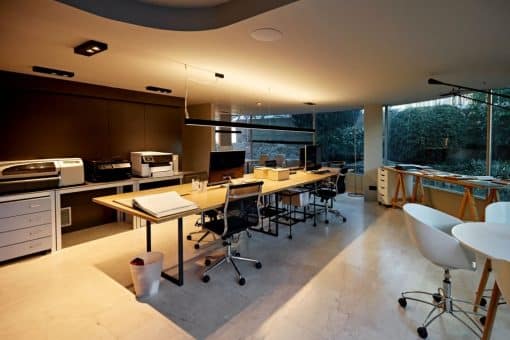Uncategorized
7 Things You Need for An Ergonomic Workstation Set Up

Most of us sit down at our desks and start working without paying much attention to our workstation set up. As a result, you start to develop aches and pains that get worse over time. If you notice that your symptoms get aggravated when you sit at your desk and improve when you are away from your desk, it’s likely that your set up is not quite right.
Office workstation set up plays a vital role in both quality of health and productivity. One that supports your body in a relaxed, neutral position can reduce risk of injury by minimizing the stress placed on your body.
The following are essential ergonomic workstation equipment to create a workspace that will support you best:
1. An Office Chair That Supports Your Spine and Has Multiple Adjustments
If you spend most of your day sitting at your desk, it’s worth investing in an ergonomic office chair that can be easily adjusted for your needs. Everybody is built differently, so your chair needs to suit your specific requirements.
- The backrest should support the natural ‘S’ shaped curve of your spine and have a lumber support; a higher backrest and one that promotes dynamic sitting rather than a static posture is recommended to reduce muscle tension – make sure the spring tension is adjusted to suit your build
- The chair should have a seat height adjustment that allows you to sit with your forearms horizontal to the desk surface and hip angle at 100 degrees
- The length of the seat pan should allow a small gap behind your knees when you are sitting all the way back against the backrest; look for a chair with a seat slide adjustment
2. A Desk of Appropriate Size and Height
- The desk should be large enough to accommodate all your workstation items
- The preferred height of a fixed height desk is within the range of 720mm to 740mm, but can be lower or higher depending on your stature
- Minimum depth of 70cm is recommended
- There should be adequate leg clearance under the desk
- If you are using a standing workstation, make sure you apply the same principle of forearms horizontal to the desk surface when selecting the standing desk height
3. Screens That Are Set at Eye Height and Within Arm’s Reach
- The top of the screen should be positioned at eye level with the screen distance adjusted to suit your vision (approximately arms-length away)
- If you use two screens with a 50/50 split, position them close together with yourself centrally between them; for a 60/40 split, have the primary screen in front of you, with the secondary screen angled inward to the side of it – for more versatility and control over the height or angle of the screens, consider using a monitor arm
4. A Stand for Your Laptop or Tablet Screen
- Research suggests that looking down to view a laptop screen or tablet is directly associated with neck pain, especially if done for long periods of time
- If you are using a laptop or tablet as a screen, it should be placed on a laptop or tablet stand to improve the height
5. An Ergonomic Keyboard
- Using an ergonomic keyboard with appropriate technique avoids the awkward wrist angles that can cause discomfort
- It is important that your wrists are as straight as possible when using your keyboard– one with a low profile is ideal
- Ensure there is appropriate forearm support space in front of the keyboard to reduce load in your neck and shoulder muscles
6. A Comfortable Mouse
- Repetitive motions on a standard mouse or laptop trackpad can stress the muscles in your forearm, wrist, and fingers
- A vertical mouse is recommended if you are experiencing pain – it allows you to rest your wrist and forearm in a neutral position when using the mouse, which will help decrease muscle tension in these areas
7. Good Lighting
- A well-lit workspace can reduce eye strain and boost energy levels
- Natural lighting is best and access to outdoor views gives you a chance to stretch your eyes when needed – position your screens perpendicular to windows so there is less glare and reflection
- If you don’t have windows or have poor lighting, couple overhead lighting with a desk lamp
